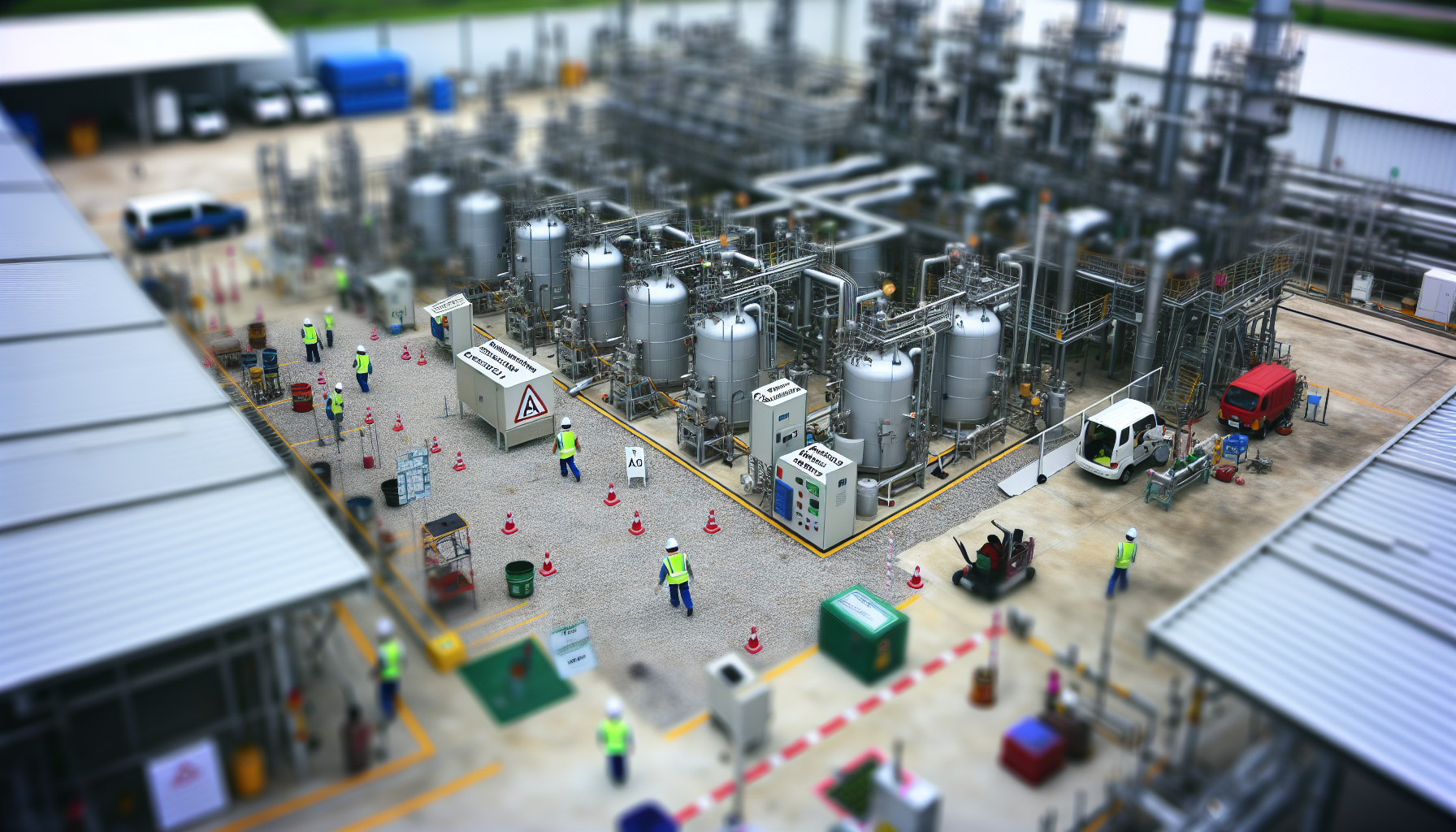In an industrial landscape marked by innovation and complexity, the importance of gas detection cannot be overstated. Workers across various sectors face potential hazards daily, with gases like ethylene presenting significant safety concerns. Ethylene (C₂H₄), a colorless and highly flammable gas, serves critical roles in multiple industries, making effective monitoring not just beneficial but essential.
This article will focus on industrial ethylene monitoring, emphasizing its importance to gas-dependent industries, particularly agriculture, food processing, and chemical manufacturing. Ensuring safe work environments through reliable detection systems stands at the forefront of operational excellence, compliance, and safety protocols. By understanding the properties and risks of ethylene, as well as the challenges faced in its monitoring, industrial workers can adopt more effective safety measures in their daily practices.
Understanding Ethylene Gas
Properties of Ethylene
Ethylene is a highly flammable gas that presents specific properties requiring keen attention in gas-dependent industries. With an ignition temperature of approximately 430°C (806°F) and a narrow explosive range of 2.7% to 36% in ambient air, managing ethylene levels is of utmost importance. Exposure to high concentrations can lead to respiratory issues, dizziness, and other health problems, underscoring the need for consistent and accurate monitoring.
Uses in Various Industries
Ethylene’s versatility makes it a valuable asset across several sectors:
- Agriculture: Ethylene acts as a vital plant hormone, promoting fruit ripening and regulating plant growth. Farmers utilize this gas for enhanced crop management, especially in the storage and transportation of produce.
- Food Processing: In the food industry, ethylene plays an essential role in prolonging the shelf life and maintaining the quality of fruits and vegetables. Ethylene’s application significantly impacts the efficiency of storage processes and supply chains.
- Chemical Manufacturing: As a key feedstock, ethylene is critical in the production of polyethylene and other plastics, forming the backbone of numerous products used in everyday life.
Risks Associated with Ethylene Exposure
While ethylene’s utility is undeniable, its risks cannot be ignored. As highlighted previously, its high flammability and potential toxicity necessitate rigorous monitoring protocols. Gas-dependent industries that handle ethylene must adhere to stringent safety practices to mitigate potential hazards effectively.
Industry Challenges with Ethylene Gas Monitoring
Monitoring ethylene effectively poses a myriad of challenges for industries that rely on its use. Understanding these obstacles is crucial for developing robust safety protocols.
Problem: Inconsistent Detection Methods
Traditional detection systems often fall short of meeting the needs of gas-dependent industries. Many existing detectors lack the sensitivity and reliability required for ethylene, which can lead to dangerous underreporting. This inconsistency not only compromises safety but also places businesses at risk of non-compliance with regulatory standards.
Problem: Environmental Factors Affecting Detection
Environmental conditions can significantly influence the performance of gas detection systems. Factors such as interference from other gases can lead to false readings, while variations in temperature and humidity may impair sensor function. These challenges highlight the importance of deploying advanced monitoring solutions that can adapt to varying working conditions.
Problem: Regulatory Requirements
Compliance with occupational safety standards is mandatory for industries that handle ethylene. Organizations such as OSHA and NIOSH set specific guidelines related to permissible exposure limits and regular safety checks. As the focus on workplace safety intensifies, industries must ensure constant monitoring to avoid costly penalties and maintain safe work environments.
Effective Solutions for Ethylene Gas Monitoring
Solution: Advanced Detection Technologies
To address the inconsistencies in detection methods, industries are increasingly turning to advanced detection technologies like those offered by Interscan. Real-time monitoring systems provide immediate data on ethylene levels, allowing facilities to respond swiftly to any changes in gas concentration. Moreover, multi-gas detectors enhance safety by surveying multiple chemicals simultaneously, ensuring a more thorough hazard assessment. Systems such as GasD8000 Portable Gas Detector and Interscan’s fixed-point and portable detectors utilize electrochemical sensors, achieving high sensitivity to trace-level concentrations and real-time readings that are vital in the management of ethylene gas.
Solution: Regular Maintenance and Calibration
Regular maintenance and calibration of gas detection equipment are critical to maintaining accuracy and ensuring compliance with safety standards. To achieve optimal performance from detectors, industries should implement strategies such as routine calibration checks and sensor replacements, using calibration gas cylinders specifically designed for ethylene. This proactive approach minimizes the risk of false negatives and ensures that detection systems perform effectively under various environmental conditions.
Solution: Employee Training and Emergency Preparedness
Employee training forms the backbone of an effective safety protocol. Implementing comprehensive training programs guides staff on the correct use and troubleshooting of gas detection equipment, reducing the likelihood of human error. Industries should also develop robust emergency response plans outlining procedures to follow in the event of an ethylene incident, ensuring that employees are prepared to act swiftly and decisively in critical situations.
Interscan: A Comprehensive Solution for Ethylene Gas Monitoring
Interscan stands at the forefront of providing comprehensive gas detection solutions tailored to the unique challenges posed by ethylene monitoring. With a commitment to cutting-edge technology, Interscan offers a range of advanced gas detection systems that not only ensure accurate monitoring but also uphold compliance with safety standards established by organizations such as OSHA and ACGIH. The introduction of features like the ‘Interchange Sensor’ allows for quick sensor exchanges, enhancing operational efficiency while ensuring continued reliability. Additionally, Interscan supports industrial applications through training resources that empower workers to maintain a safe working environment.
In conclusion, understanding the properties and risks associated with ethylene gas sets the stage for addressing critical monitoring challenges. By embracing advanced detection technologies, committing to regular maintenance, and prioritizing employee training, companies can enhance workplace safety and mitigate the risks associated with ethylene exposure.


